Brucella ceti infection in dolphins from the Western Mediterranean sea
- PMID: 25224818
- PMCID: PMC4180538
- DOI: 10.1186/s12917-014-0206-7
Brucella ceti infection in dolphins from the Western Mediterranean sea
Abstract
Background: Brucella ceti infections have been increasingly reported in cetaceans. Brucellosis in these animals is associated with meningoencephalitis, abortion, discospondylitis', subcutaneous abscesses, endometritis and other pathological conditions B. ceti infections have been frequently described in dolphins from both, the Atlantic and Pacific Oceans. In the Mediterranean Sea, only two reports have been made: one from the Italian Tyrrhenian Sea and the other from the Adriatic Sea.
Results: We describe the clinical and pathological features of three cases of B. ceti infections in three dolphins stranded in the Mediterranean Catalonian coast. One striped dolphin had neurobrucellosis, showing lethargy, incoordination and lateral swimming due to meningoencephalitis, A B. ceti infected bottlenose dolphin had discospondylitis, and another striped dolphin did not show clinical signs or lesions related to Brucella infection. A detailed characterization of the three B. ceti isolates was performed by bacteriological, molecular, protein and fatty acid analyses.
Conclusions: All the B. ceti strains originating from Mediterranean dolphins cluster together in a distinct phylogenetic clade, close to that formed by B. ceti isolates from dolphins inhabiting the Atlantic Ocean. Our study confirms the severity of pathological signs in stranded dolphins and the relevance of B. ceti as a pathogen in the Mediterranean Sea.
Figures
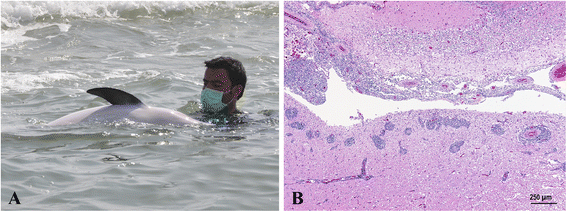
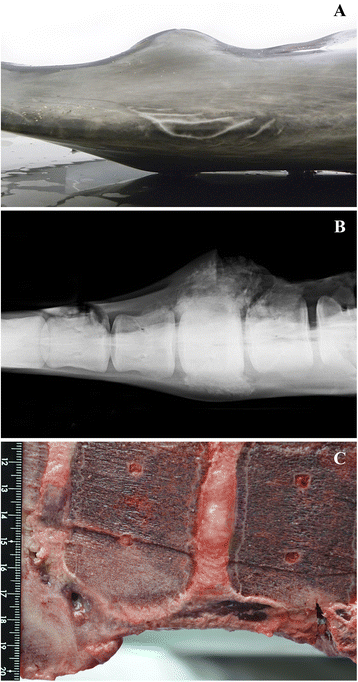
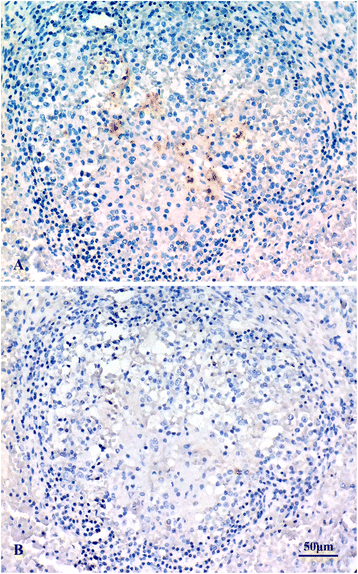
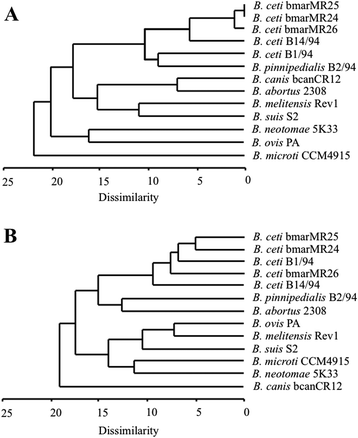
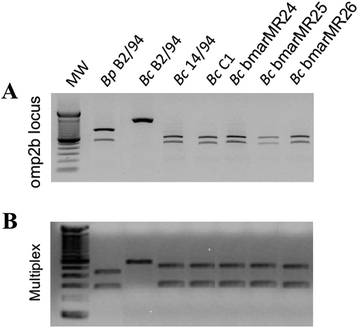
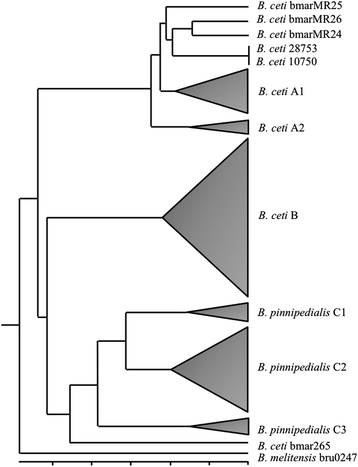
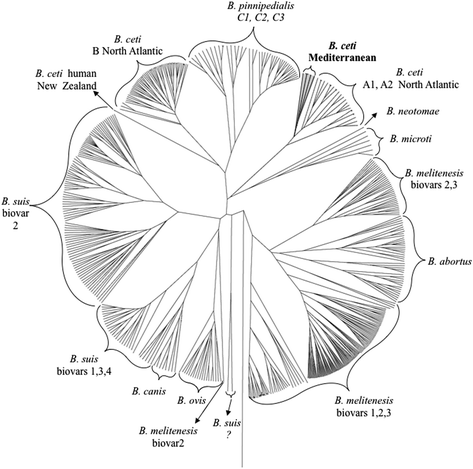
Similar articles
-
Brucella ceti and brucellosis in cetaceans.Front Cell Infect Microbiol. 2012 Feb 6;2:3. doi: 10.3389/fcimb.2012.00003. eCollection 2012. Front Cell Infect Microbiol. 2012. PMID: 22919595 Free PMC article. Review.
-
Occurrence of Brucella ceti in striped dolphins from Italian Seas.PLoS One. 2020 Oct 2;15(10):e0240178. doi: 10.1371/journal.pone.0240178. eCollection 2020. PLoS One. 2020. PMID: 33007030 Free PMC article.
-
Brucella ceti from two striped dolphins stranded on the Apulia coastline, Italy.J Med Microbiol. 2014 Feb;63(Pt 2):325-329. doi: 10.1099/jmm.0.065672-0. Epub 2013 Dec 9. J Med Microbiol. 2014. PMID: 24324028
-
Causes of cetacean stranding and death on the Catalonian coast (western Mediterranean Sea), 2012-2019.Dis Aquat Organ. 2020 Dec 17;142:239-253. doi: 10.3354/dao03550. Dis Aquat Organ. 2020. PMID: 33331291
-
A review of Brucella infection in marine mammals, with special emphasis on Brucella pinnipedialis in the hooded seal (Cystophora cristata).Vet Res. 2011 Aug 5;42(1):93. doi: 10.1186/1297-9716-42-93. Vet Res. 2011. PMID: 21819589 Free PMC article. Review.
Cited by
-
Brucella ceti Infection in Striped Dolphins from Italian Seas: Associated Lesions and Epidemiological Data.Pathogens. 2023 Aug 13;12(8):1034. doi: 10.3390/pathogens12081034. Pathogens. 2023. PMID: 37623994 Free PMC article.
-
Bottlenose dolphins (Tursiops truncatus) aggressive behavior towards other cetacean species in the western Mediterranean.Sci Rep. 2021 Nov 3;11(1):21582. doi: 10.1038/s41598-021-00867-6. Sci Rep. 2021. PMID: 34732761 Free PMC article.
-
Serological Investigation for Brucella ceti in Cetaceans from the Northwestern Mediterranean Sea.Animals (Basel). 2024 Aug 20;14(16):2417. doi: 10.3390/ani14162417. Animals (Basel). 2024. PMID: 39199951 Free PMC article.
-
Brucella ceti in Common Dolphins (Delphinus delphis) in Portugal-Characterization of First Isolates.Animals (Basel). 2025 Jan 28;15(3):374. doi: 10.3390/ani15030374. Animals (Basel). 2025. PMID: 39943144 Free PMC article.
-
Characterisation of North American Brucella isolates from marine mammals.PLoS One. 2017 Sep 21;12(9):e0184758. doi: 10.1371/journal.pone.0184758. eCollection 2017. PLoS One. 2017. PMID: 28934239 Free PMC article.
References
Publication types
MeSH terms
LinkOut - more resources
Full Text Sources
Other Literature Sources

